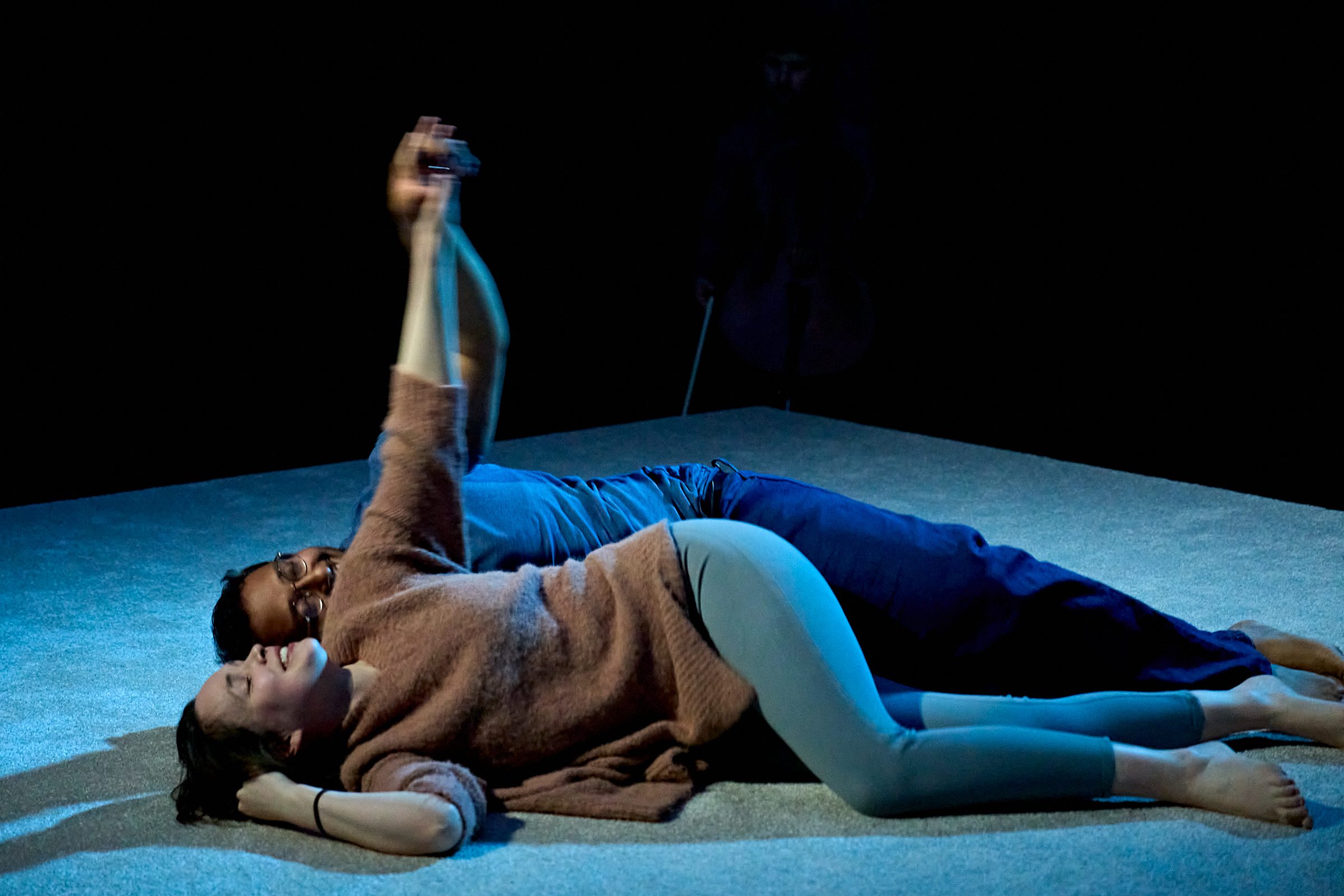Michael Coveney: Magisterial Bob Wilson lays down the law to Trelawny
Robert Wilson had a big Olympic Games year in Britain and returned to the Barbican last night to renew one of the key avant garde texts of post-war America, John Cage‘s Lecture on Nothing, as part of the Dancing Around Duchamp surreal season.
The place was packed. Wilson sat, still and forbidding, on a big stage, caked in whiteness. Slogans and wise saws hung around him on banners, the floor was strewn with scrunched up manuscript, a man in black trained his binoculars on us, and on Bob, while the air filled with screeching alarms for at least ten minutes.
We were all waiting for the famous Cage rubric: “I have nothing to say… and I am saying it… and that is poetry.” But it arrived long after Wilson had established his performance as a companion piece to his brilliant take on Beckett’s Krapp’s Last Tape: a sage recalling his best moments and past life; he even played back Cage’s real voice on tape towards the end.
Otherwise, he recited the repetitious text with exaggerated regard for its pauses and lacunae, running his right-hand index finger along the text of a big book on the desk, as if it were braille, while guiding his attention to each line with a pencil in his left hand.
Cage’s experimental text was published in a 1961 collection called Silence. It’s rather like the confident, laconic concrete poetry of William Carlos Williams, Gertrude Stein or ee cummings, emphasising the dominant assurance of the speaker and his right to call the shots, rearrange the rules of metre and engagement.
In this case, what is required is silence… But without talking, there is no silence. What is clear, says Wilson, is that we are getting nowhere, slowly. If anyone is sleepy, he says, let them go to sleep (everyone woke up at this point). And here we are, we found, at the eleventh unit of the fourth part while, when I am working, it’s clear that I know nothing.
Part parody of a formal lecture, part statement of a modernist, hollow disavowal, the lecture depends for its effect on the context of its delivery. Wilson turns it into performance art, having it both ways as a public address and a “happening.” He’s microphoned like an inarticulate zombie, turning the act of reaching for a glass of water into a slow-motion tragic gesture.
I must say I found it all strangely hypnotic. And rather moving to see Wilson acknowledging two strands of his avant garde roots: his American experimental forebears, Cage and Merce Cunningham; and the comic, music hall existentialism of Beckett and Ionesco. He’s almost on the brink of fusing and reanimating both wires of investigation.
There was a wonderful moment before the show when I found myself talking in the foyer to three former FT music critics: Paul Driver, now of the Sunday Times, who was carrying a famous Calder and Boyars edition of Cage’s book; Andrew Clements, now of the Guardian; and Sir Nicholas Kenyon, who now runs the Barbican Centre.
I couldn’t say that I felt we were all on the verge of seeing something new, or particularly important. But when I sat down I reflected that what is passe in the arts is now so passe that its time may well have come round again. And that’s very much an impression made by the Duchamp exhibition in the Barbican’s art gallery: is it now time to re-define what these guys meant by trying to re-define what the hell is art anyway?
It’s with joy bordering on relief, therefore, that I contemplate tonight’s opening of Pinero’s Trelawny of the Wells at the Donmar Warehouse. Director Joe Wright‘s theatrical obsessions are much more practical than Wilson’s, judging by his pedigree and his movies, and they need to be to deal with the special charm and Edwardian flamboyance of this glorious drama.
Joe’s parents founded the Little Angel marionette theatre in Islington, and his latest film, Anna Karenina, is a gloriously theatrical affair (for the first hour-and-a-half, at least) improvising Tolstoy’s great novel – with a lovely, witty script by Tom Stoppard – in the broken-down interior of an Imperial Russian theatre; the scene where Keira Knightley’s impetuous Anna dances for the first time with Aaron Taylor-Johnson’s blond bombshell Vronsky is a masterpiece of cinematic and theatrical choreography.
Unfortunately, the last half hour of the movie is a complete blow-out. But it’s good to see such a great sense of theatre in the cinema, and one so diametrically, and traditionally, opposed to the still questing spirit of the tottering old avant garde icon that is the miraculously preserved and unwaveringly bizarre figure of Robert Wilson.










